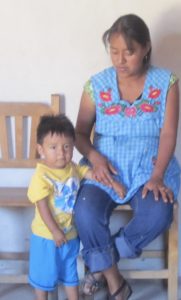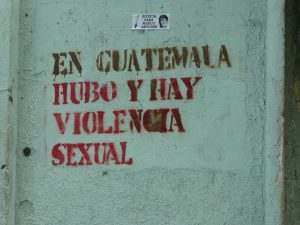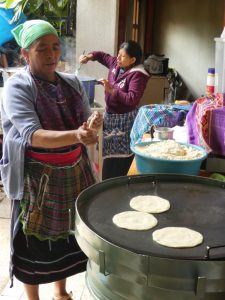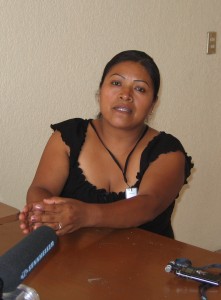
Dr. Lynn Stephen is a Distinguished Professor of Arts and Sciences, Professor of Anthropology, and Director of the Center for Latino/a and Latin American Studies (CLLAS) at the University of Oregon. Stephen is a cultural anthropologist whose interdisciplinary research has been at the forefront of illuminating major challenges facing Mesoamerican indigenous peoples–out-migration, tourism, state assimilation programs and nationalism, economic development, violence and low-intensity war—and of analyzing the spectrum of local and global responses they have developed to these issues, including social movements, unique educational and knowledge systems, innovative forms of media and governance and rights claiming. Gender and its intersection with race, class, ethnicity, and nationalism has been the primary lens for much of this work. Her research over three decades has anticipated the ways that globalization is creating new forms of transborder social and political organization. Her theoretical concept of transborder communities has been widely adopted by scholars of migration in many fields, as has her research on gender in indigenous populations. Stephen has also brought her research to a broad audience through innovative public education and multi-media projects. She has authored or edited 11 books, three special journal issues and has published more than 80 scholarly articles and two films.
Academic article: Fleeing Rural Violence: Mam Women Seeking Gendered Justice in Guatemala and the U.S
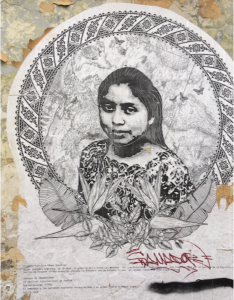 I use the concept of gendered embodied structures of violence as the analytical framework for illustrating how in rural Huehuetenango, Guatemala, historical and contemporary structures and processes of violence which center the normalization of multiple forms of implied or actual physical and sexual violence against women (and often other men and children) continue to undermine efforts to strengthen women’s rights and provide access to safety and justice for women. Overlapping structures of primarily male power suggest the difficulty of separating state and non-state actors from the vectors of violence affecting women. This article contributes to emerging literature on indigenous women’s access to justice in Latin America by adding a transnational lens to this discussion and suggesting why we cannot separate the public from private violence and state from non-state actors.
I use the concept of gendered embodied structures of violence as the analytical framework for illustrating how in rural Huehuetenango, Guatemala, historical and contemporary structures and processes of violence which center the normalization of multiple forms of implied or actual physical and sexual violence against women (and often other men and children) continue to undermine efforts to strengthen women’s rights and provide access to safety and justice for women. Overlapping structures of primarily male power suggest the difficulty of separating state and non-state actors from the vectors of violence affecting women. This article contributes to emerging literature on indigenous women’s access to justice in Latin America by adding a transnational lens to this discussion and suggesting why we cannot separate the public from private violence and state from non-state actors.
Academic article: Bearing Witness: Testimony in Latin American Anthropology and Related Fields. Journal of Latin American and Caribbean Anthropology
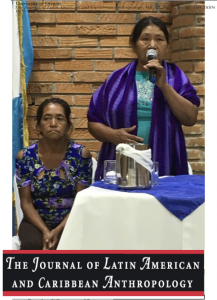 Oral narrative and in its narrower form, oral testimony, is an important vehicle for broadening anthropological analysis: it opens up who legitimately speaks and is heard in a given society. Testimony is a crucial component in knowledge production, archiving, and amplification. This article reflects on testimony in relation to how testimony serves to build new knowledge and analytical models: its role in indigenous literacy over time; its trajectory from heroic individual narrative to collaborative/collective narratives; gender, testimony, and resisting the logic of the colonial/modern gender system; archiving, and the power of testimony to influence perceptions of history and events; and anthropology and the mobilization of testimony in expert witnessing. Testimony is a key epistemological tool for alternative knowledge production in the field of Latin American and Caribbean anthropology and in decentering the normative geopolitics of knowledge. [Central America, gender, human rights, Mexico, migration]
Oral narrative and in its narrower form, oral testimony, is an important vehicle for broadening anthropological analysis: it opens up who legitimately speaks and is heard in a given society. Testimony is a crucial component in knowledge production, archiving, and amplification. This article reflects on testimony in relation to how testimony serves to build new knowledge and analytical models: its role in indigenous literacy over time; its trajectory from heroic individual narrative to collaborative/collective narratives; gender, testimony, and resisting the logic of the colonial/modern gender system; archiving, and the power of testimony to influence perceptions of history and events; and anthropology and the mobilization of testimony in expert witnessing. Testimony is a key epistemological tool for alternative knowledge production in the field of Latin American and Caribbean anthropology and in decentering the normative geopolitics of knowledge. [Central America, gender, human rights, Mexico, migration]
academic article: GENDERED VIOLENCE AND INDIGENOUS MEXICAN ASYLUM SEEKERS: EXPERT WITNESSING AS ETHNOGRAPHIC ENGAGEMENT
The intertwined theoretical contributions of this article are: 1) how to interpret the lives of indigenous women asylum seekers in relation to structural vulnerability in western Oaxaca, Mexico, and in the asylum-seeking process in the US, and 2) why expert witnessing should be considered as a form of ethnographic engagement. My discussion entails a detailed analysis of the cases of two female Triqui asylum seekers and their connections with local, regional, and larger state and economic structures and narratives of militarized gender violence. Finally, I discuss the ways that ethnographies as expert objects and expert witness reports harness both evidence and narrative through an interpretive framework.
Academic article: Cross-border gender violence and Guatemalan indigenous women refugees
This article examines the structural gender violence suffered by Guatemalan indigenous women and girl refugees. For this, a transborder intersectional analytical framework is employed, and the statements included in asylum applications are used along with interviews conducted with 24 indigenous women and girls, complemented by 60 interviews with judges, activists, lawyers and advocates who work in and for the Guatemalan courts specialized in gender violence. The integrated economic policy of the United States, Mexico and Central America, as well as the military, trade and immigration policies in the region are the wider framework in which gender violence has evolved and are an integral part of the lives of the indigenous women and girls fleeing Guatemala today.
ACADEMIC ARTICLE: Guatemalan Immigration to Oregon: Indigenous Transborder Communities
This article tells the story of Guatemalan migration to and settlement in Oregon through the lens of Mam indigenous people who have made the journey primarily during the past fifteen years. Understanding why Guatemalans have had to flee their country and build new communities in Oregon requires understanding the history of the Guatemalan civil war and its aftermath, from 1980 to the present. There are indigenous migrants in Oregon from a variety of counties in Guatemala. I focus here on the municipality of Todos Santos Cuchamatán, Huehuetenango, offering it as a case study by using the stories of people from Todos Santos to build the story of indigenous Guatemalan migration to Oregon. The article uses the concept of transborder community building to explain how migration happens through time and results in thick networks and connections between Oregon and Guatemala. The narratives included here have been created as part of a collaborative research project involving indigenous Guatemalans seeking different types of asylum in the United States.
ACADEMIC ARTICLE: The Rights to Speak and to be Heard: Women’s Interpretations of Rights Discourses in the Oaxaca Social Movement
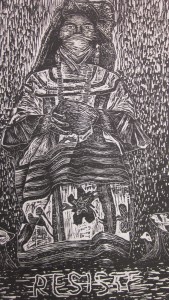 This chapter highlights the process by which several hundred women in Oaxaca City, Mexico, from different types of backgrounds took over state and then commercial media for a period of several months and in the process came to a gendered analysis of human rights. Their thinking centered on what they called the rights “to speak,” “to be heard,” and “to decide who governs.” Through an event-centered analysis I will argue that the appropriation of human rights discourses became gendered through the process of the media takeover. Through their experience running state television and radio stations and subsequently commercial stations, women who held the stations produced a gendered local vernacular of rights talk that then became accessible to many other women and men in the city. Women who were previously silenced and characterize themselves as “short, fat, and brown and the face of Oaxaca” allowed new voices to be heard, new faces to be seen, and permitted silenced models of governance and democratic participation to move into the cultural and political mainstream.
This chapter highlights the process by which several hundred women in Oaxaca City, Mexico, from different types of backgrounds took over state and then commercial media for a period of several months and in the process came to a gendered analysis of human rights. Their thinking centered on what they called the rights “to speak,” “to be heard,” and “to decide who governs.” Through an event-centered analysis I will argue that the appropriation of human rights discourses became gendered through the process of the media takeover. Through their experience running state television and radio stations and subsequently commercial stations, women who held the stations produced a gendered local vernacular of rights talk that then became accessible to many other women and men in the city. Women who were previously silenced and characterize themselves as “short, fat, and brown and the face of Oaxaca” allowed new voices to be heard, new faces to be seen, and permitted silenced models of governance and democratic participation to move into the cultural and political mainstream.
ARTÍCULO ACADÉMICO: GENDERED TRANSBORDER VIOLENCE IN THE EXPANDED UNITED STATES-MÉXICO BORDERLANDS
The domestic violence experienced by Mexican immigrant women needs to be understood within a larger context of structural violence, which includes criminal and state violence aggravated by their unprotected status in the United States as “immigrant aliens.” Transborder violence refers to forms of violence that cross multiple national, regional, class, ethnic, and state boundaries. This article uses one case of what lawyers call gender-based asylum to demonstrate how structures of transborder violence entrap women. This case represents the kinds of cases I have worked with as an expert witness. What anthropologists learn as expert witnesses provides important information about broader patterns of gendered violence that need to be documented and analyzed. This article is framed by an understanding of the borderlands, including not only the geographic United States-Mexico border but also the broader reach of transborder communities and networks, which span the United States and Mexico. In connecting the transnational drug economy, (para) militarization, domestic, and other forms of gendered violence, it illuminates the broader political, social, and economic context within which the potential and actual killing of individual women and gendered violence continue to occur.
JOURNALISTIC ARTICLE: Género, Etnicidad y Migración: Lecciones de los Mixtecos y Zapotecos
This chapter explores how Zapotec and Mixtec patterns of migration in the western United States are gendered. A significant emphasis in this chapter is on how the experience of migration and the kind of work schedule that is demanded of low-wage migrants often rearranges gender relations in Oaxaca and in the United States alike. What happens when male farmworkers cook, sew, and clean for one another in labor camps? How do men and women work full-time in the United States, often at one or more minimum wage jobs on opposite shifts, and share childcare and domestic chores? Trans-border mothering is explored in terms of its consequences for women in Mexico and in the United States.
Multimedia
Sad Happiness: Cinthya’s Transborder Journey
This documentary explores the differential rights that U.S. citizen children and their undocumented parents have through the story of one extended Zapotec family. Shot in Oregon and Oaxaca, Mexico, and narrated by eleven-year-old Cinthya, the film follows Cinthya’s trip to her parent’s home community of Teotitlán del Valle with her godmother, anthropologist Lynn Stephen. There she meets her extended family and discovers her indigenous Zapotec and Mexican roots. … At a larger level, Cinthya’s story illuminates the desires and struggles of the millions of families divided between the U.S. and other countries where children are mobile citizens and parents cannot leave. In English, Spanish, and Zapotec with English subtitles.
